In construction, the size of the beam required to span a certain distance is an important consideration to ensure the structural integrity of a building or a structure.
The appropriate beam size depends on various factors, such as the load it needs to support, the type of material used, and the structure’s design.
When it comes to residential construction, it’s essential to consult a structural engineer or a licensed contractor to determine the appropriate beam size based on the project’s specific requirements.
However, there are rough guidelines for the size of beams, such as using a double 2×12 beam for wooden beams that can span up to 20 feet and a W8x18 beam for steel beams that can support a span of up to 22 feet.
Finding The Right Wood Beam Size For 20 Feet Span
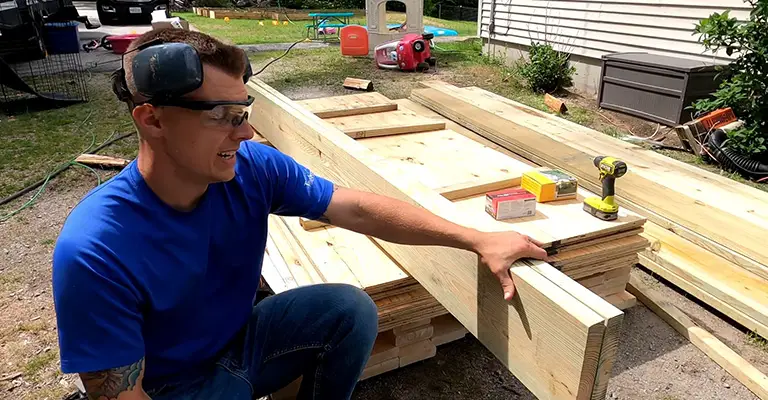
When considering a span of 20 feet, you will need a beam of a specific size. It is necessary for the wood beam to be at least 18 inches deep for spans exceeding 20 feet.
Some online calculators are available to help determine what size beam is needed for a specific span.
As per general thumb rule and guidelines, for a 20-foot span, you will need at least a 4-2×16 or 8×16 size wood beam. Hence, a 2×16 wooden beam coupled with 4 nails or a 4×16 wooden beam combined with 8 nails can span 20 feet.
For a 20-foot span, the wood beam has to be at least 16 inches in depth and 8″ in width (4-2×16) used for residential buildings or projects.
If you use multiple-ply wood for your beams, make sure they are pressed plumb and tightly together. They will then be able to carry the weight the beam is designed to carry.
Are All Beams Load Bearing?
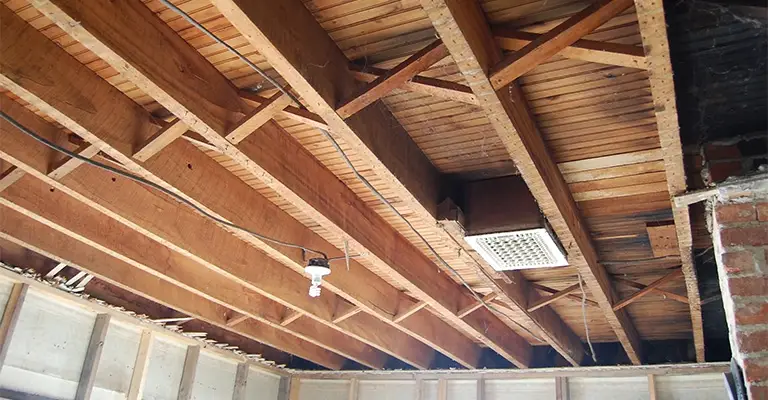
Its original purpose was load-bearing support for the frame of a structure, but beams have evolved over the years to serve other purposes. It is possible to install some beams today without a structural engineer as they are purely decorative in nature.
It is not intended for load bearing. The load-bearing beams are constructed during the house’s construction, wholly hidden from view. There is no need to have perfect beams since they are only installed for design purposes.
There are many faux beams that are made from 1-inch-thick boards, which are thinner and more affordable. When you glue three of these boards together, they will approximate the thickness of real load-bearing beams.
It is possible to design these beams easily, even adding beams at right angles to each other. All you need is a good design for a good layout of ceiling beams to achieve your desired effect.
Various layouts can be achieved with faux beams, and they are also easy to install. They can simply be attached to ceiling cleats. With screws attached to the cleats, the beams can be secured to the cleats.
A Better Understanding of Loads on Beams
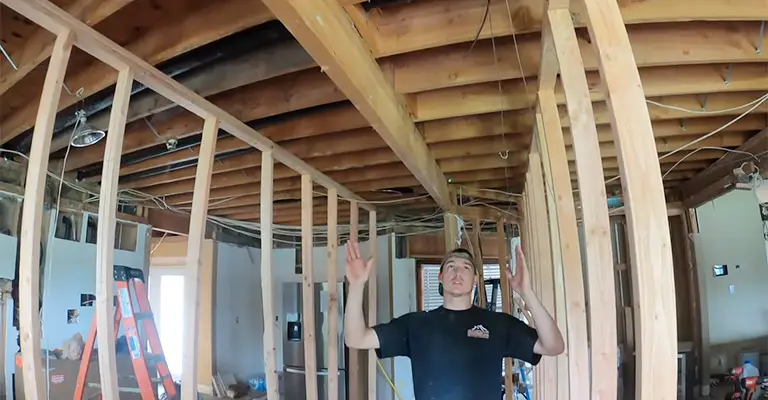
In addition, understanding the different loads is essential. In particular, there are two types of loads: interior loads and exterior loads. The beam will either be installed on an inside wall or an outside wall.
Interior Beams
The load of the roof must most often be included in the interior beams. Consult an engineer or supplier whenever you are unclear. Typically, most calculators will match up to 90% of the applications in the International Residential Code.
Outside Wall
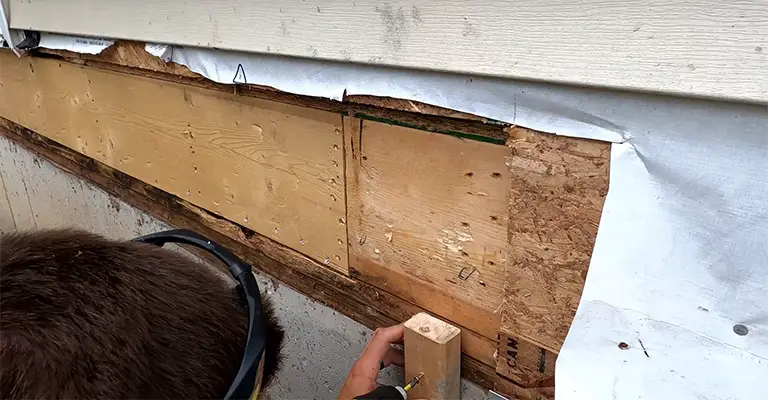
In the case of an outside wall with clear span trusses, the load is about half what it is for the inside wall.
So, let’s say that you have a 24′ x 24′ building with trusses, and the load on the roof is roughly 30 lbs. of snow. In addition, there will be no storage in the ceiling.
There will be double the amount of load on that wall as there would be on buildings with a center wall. You only need to select the loads that apply to your situation since most calculators incorporate that information.
Using a Beam Calculator
Using a wood beam calculator, you can calculate the number of beams needed for a specified span. To calculate the size of a girder, beam, or header, you’ll need to know the material to be used. We generally use either LVL or No. 2 pine.
Check your calculations with span charts twice. It is also important to keep in mind that the calculated size is only meant for evenly distributed loading.
The Calculator
A few questions determine how the beam calculator works. The first step is deciding whether the beam is within a wall or outside one. There is also the question of whether there are trusses.
Lastly, you can choose among options such as snowfall, ceilings with limited storage, ceilings on the second floor, and so much more.
These calculators make determining the beam for a span as easy as possible. It is possible to obtain an accurate representation of what size beam is needed by combining the information above with the span and width of the loaded area.
Columns and Decking for Flooring
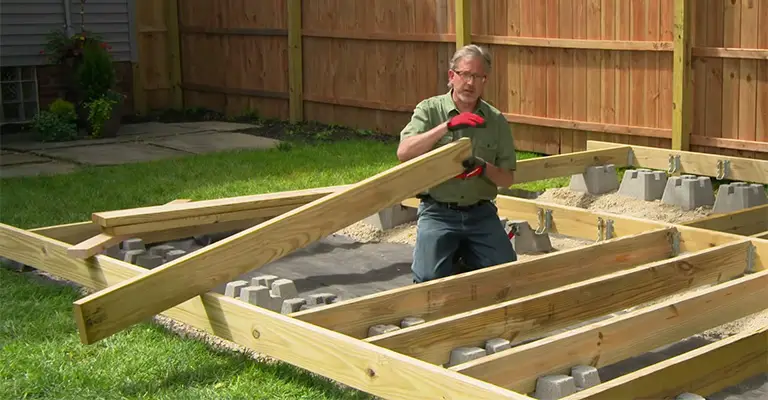
When it comes to columns, the size is entirely determined by the floor area they support. Using the area of the flooring, divide the distance between adjacent columns and the main columns to determine the column’s size.
Column
In the case of an 8×8 column, 3,000 square feet of space can be supported. The column would have to be 12 inches by 12 inches to support 6,000 square feet.
So on and so forth. Add two inches to the column support to give yourself an additional 1,500 feet of column support.
Decking
In the place of beams and girders, you might end up using decking and joists. Sheer studs are used, for instance, in metal decking.
For spans up to 15 feet, they have a 2-inch depth, while for spans up to 10 feet, they have a 3-inch depth. In general, adding an inch to the depth will add approximately 5 feet to the span.
Additionally, you will need to pour several inches of concrete on top of the floor to provide additional stability. Achieving the correct dimensions means ensuring the proper rigidity.
Be Sure to Use Common-Sense
Several common-sense tips can be helpful. Due to the fact that load calculations act as the home’s literal structural support, errors can have serious consequences. Take a look at these common-sense tips.
Two-ply 2 x 8
The majority of professionals recommend never using a beam less than a two-ply 2 x 8. No matter what the specs say, you should meet the bare minimum.
The majority of these are used for smaller areas, such as openings around interior doors. Due to its strength, it is also the safest place in your house in an emergency.
Don’t Be Afraid To Call A Professional
You should leave this to the professionals if you don’t have any experience in this area. Leaving improper calculation or installation to chance could have dire consequences.
Bearing and Fastening
Knowing a few simple bearing and fastening tips is essential, just like the common-sense rules above.
Fastening
Two- or three-ply beams must be fastened together with bolts or nails. As a rule of thumb, the International Residential Codes recommend a minimum of 32″ o.c. staggered pattern, with a minimum of a 3″ x .120″ nail be used.
Generally speaking, though, using a 3-1/4″ x .131″ groove shank nail every four feet apart across the laminate is the best bet.
Bearing
The International Residential Code stipulates that any joist, beam, or header cannot have a bearing less than 1-1/2″.
Those who are 5′ or taller should at least double that amount. If the span is slightly longer, more bearing space may be needed. Use bearing tables online as a reference.
How Big of a Beam is Needed to Span 12 Feet?
Simple steps can be followed to estimate beam span.
When the joists span 12 feet, and there is no overhang, you can use a double-ply beam, the depth in inches of the depth of the joists.
So, that means a 2×12 beam can go 12 feet, a 2×10 beam can go 10 feet, and so on.
How Far Can a 2 x 8 Beam Span Without Support?
Generally speaking, joists that are spaced out at 16″ intervals in the center are capable of spanning 1.5 times in feet the depth in inches.
So, a 2 x 8 beam can span 12 feet without support. A 2×10 can span 15 feet, a 2×12 up to 18 feet, and so on. A good rule of thumb: the larger the deck, the larger the joists.
Final Words
Consult a professional if you have any doubts. As a result of their skills, knowledge, and experience, they can perform the job correctly and safely.
Make sure you are perfectly aware of what you are doing when installing a support beam.







